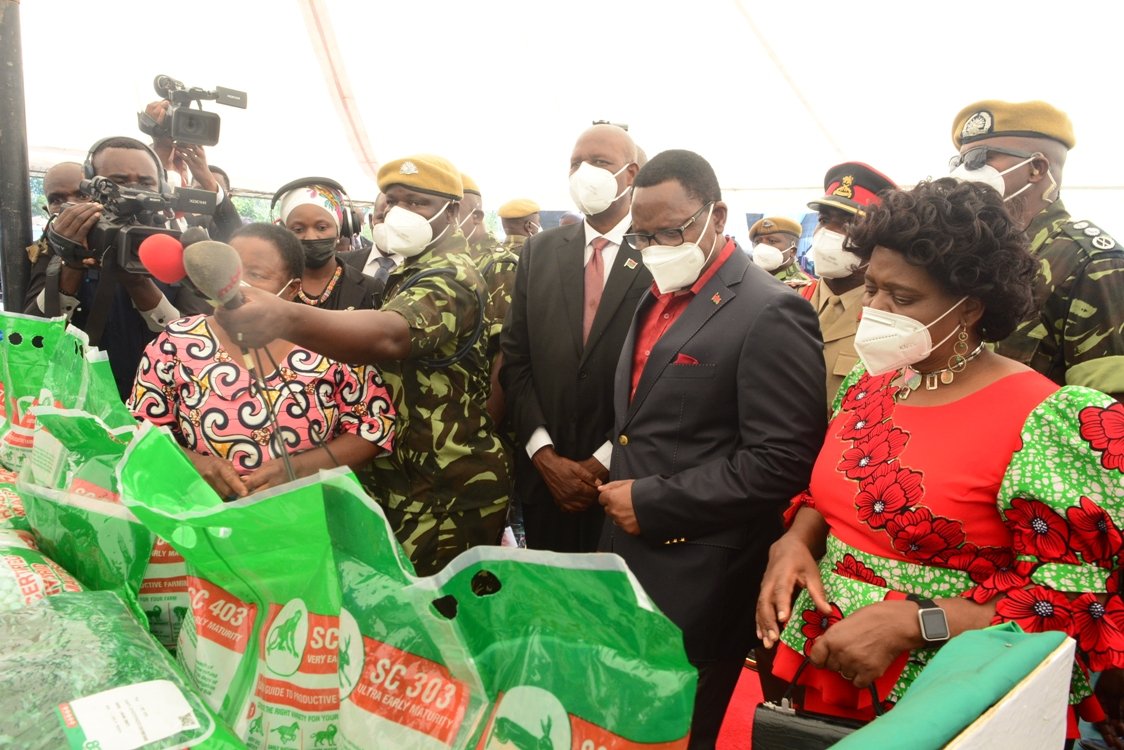
Agriculture
WORLD BANK FAULTS GOVERNMENT ON AIP
November 25, 2021 / Jane Gondwe

The World Bank has faulted the Malawi Government on the implementation of the Affordable Input Subsidy Programme (AIP) saying its huge budget is weighing heavily on allocations to development of potential agricultural commercialization and diversification areas such as production of legumes for export.
In the Country Private Sector Diagnostic Report dubbed Creating Markets in Malawi, the World Bank urges Government to increase resource allocation for productive investments in the agriculture sector, including by reviewing and adjusting the AIP to improve efficiency in terms of distribution, targeted farmers most likely to benefit from the subsidy, and fiscal sustainability.
It says though the roll out of AIP and beneficial weather conditions have resulted in bumper harvest, the longer term effects and implications of the AIP need to be closely monitored.
President Lazarus Chakwera led government, launched the AIP in October 2020, as a successor programme to the Farm Input Subsidy Programme (FISP) which was being implemented by the previous administration.
“The budget allocation for the AIP is four times that of the FISP in its final year, absorbing nearly half of the overall agricultural budget. This crowds out productive investments in the sector that could promote commercialization and more sustainable farming practices,” reads the report.
It says by widening incentives for maize production, the AIP also departs from years of effort to promote intercropping and diversification into other, more lucrative commercial crops, such as legumes.
“Reliance on a single crop weakens resilience to production and price shocks—unfortunately all-to-common occurrences for Malawi’s farmers,” states the Bretton Wood institution in the report.
The AIP has scaled up government subsidy support making it available to over 3.7 million smallholder farmers from 900 thousand supported by FISP in its final year.
The program aims to boost maize production to ensure national and household food –sufficiency while also creating a market surplus keeping in line with FISP.
The AIP has a budget of more than US$212-million (MK160-billion) representing 45% of the total agriculture sector budget and 7% of the FY2020/21 national budget proposed in September 2020, this is a tremendous increase from the FISP budget which had been brought down to roughly US$ 46.3 million (MK35 billion) in FY2019/20.
In the report, the Bretton ood institution also challenges the Malawi government to reduce leakages and increase transparency in the implementation of AIP to ensure that the programme does not become another mechanism that only generates rents for political and business elites as it was happening in the implementation of FISP by the past leadership.
The report reviews that in the past those with close relations to the political leadership benefited quite a lot from the programme.
Reads the report: “The AIP requires the participation of a broader set of private sector players simply due to the programme’s holding both suppliers and the Government accountable for true delivery of the quality inputs and timely fulfillment of payouts,”
“Success will depend on transparent contracting and enforcement, holding both suppliers and the government accountable for timely delivery of high-quality inputs and timely fulfillment of payments.”
The Bank observes that unlike FISP, the AIP does not provide coupons for legumes. Though sorghum and rice are included in the programme, experience has shown that they are not redeemed by farmers, who prefer maize as part of the cereal coupon.
It says such focus on increasing maize production detracts from efforts to diversify agricultural production.
“Malawi already suffers from an overdependence on maize, which drives soil degradation and increase vulnerability to climate shocks and pests, like the fall army worm,” the report reads.
The Bank also points out that continued focus on maize input subsidies reduces fiscal space to invest in other important sector priorities, such as irrigation and extension services.
It explains that with crop yields highly dependent on precipitation, input subsidies have experienced diminishing returns.
The report reads: “Yields have largely stagnated over the last decade, despite the FISP. The program accounted for over 40 percent of government spending on social protection between 2011 and 2019, yet more than half of Malawians continued to face severe food insecurity.”
“Analysis has shown that shifting some of the input subsidy expenditures into other social protection programs would be more effective in improving food security, while allocating a larger share of resources to investment in irrigation infrastructure and extension services to improve climate-smart agricultural practices would help to boost resilience to shocks.”
Smallholder farmers account for over 80 percent of Malawi’s agricultural production, but very few are market oriented.
More than 90 percent of farmers grow maize but just 10 percent sell it in markets, and fewer than one in five belong to a functional farmer organization.
The farmers farm on mostly small and fragmented plots, with limited and often unclear rights to the land. Tenure for most land is determined through customary systems and community ownership, which reduces the incentive to invest in the land, keeping productivity and yields low.
According to the report, Malawi’s top 10 exports in 2019 were agricultural products, and all but one have become increasingly important to the country’s export basket over the past 10 years. Small but significant steps have been taken to increase total value addition across the sector since the mid-2000s.
Raw tobacco exports, for example, have fallen since 2010, as exporters have increased primary processing to reduce bulk and weight prior to transport out of the country.
Exports of roasted coffee are another good example, becoming a million-dollar export industry in just a few years.
Other rapidly growing exports include pigeon peas, dried legumes, sesame, nuts, groundnuts, and soybean seed.
“At the same time, global demand for some important exports—notably, tobacco, raw cane sugar, and common peas—has been falling since 2015, emphasizing the need for continued diversification to respond to the market,” reads the report.































